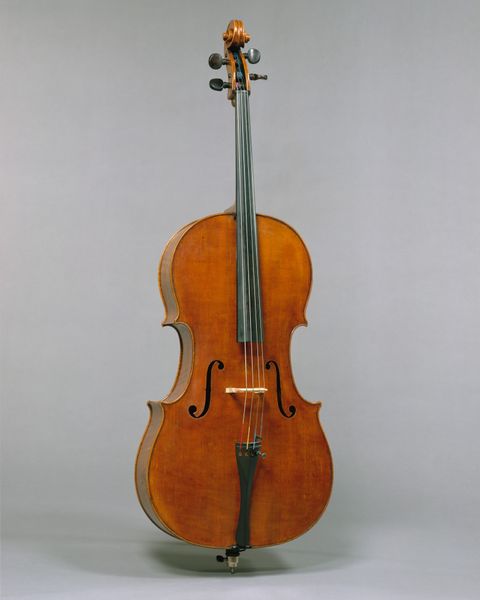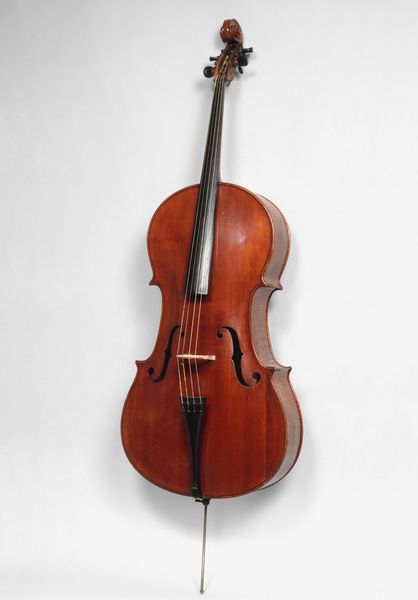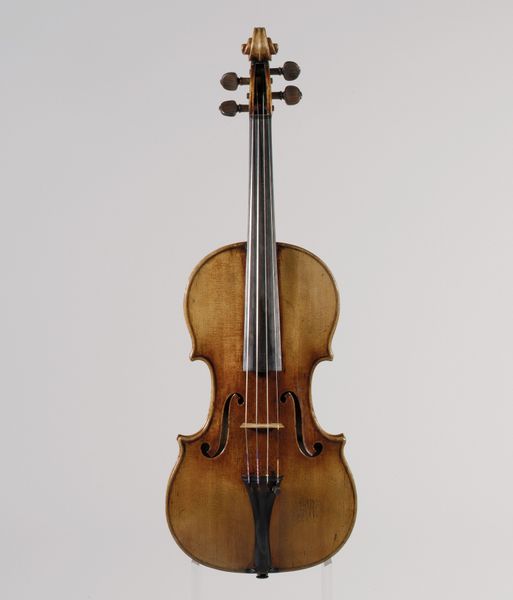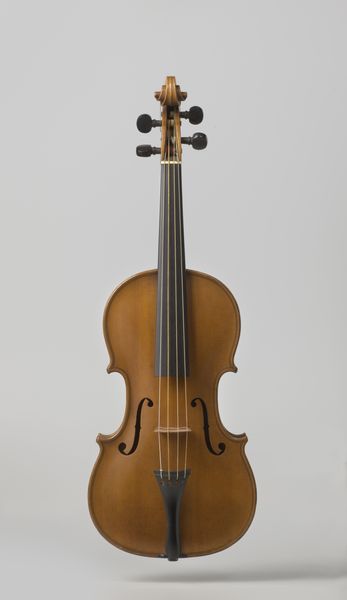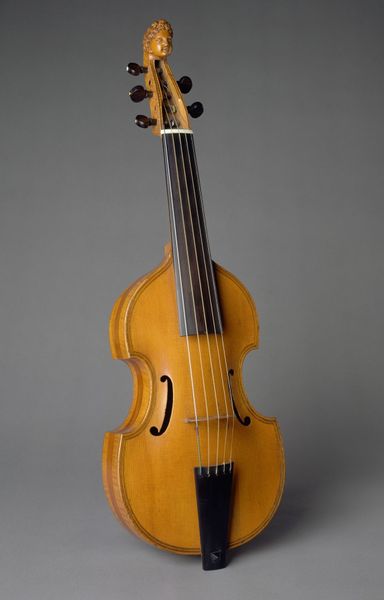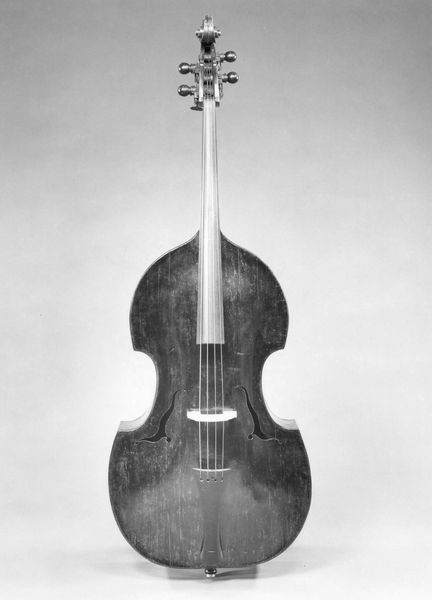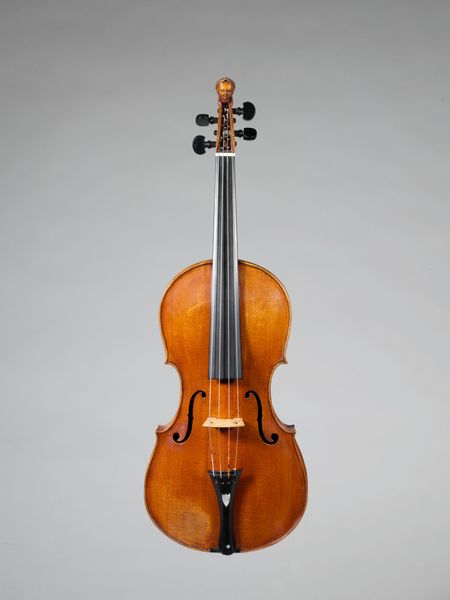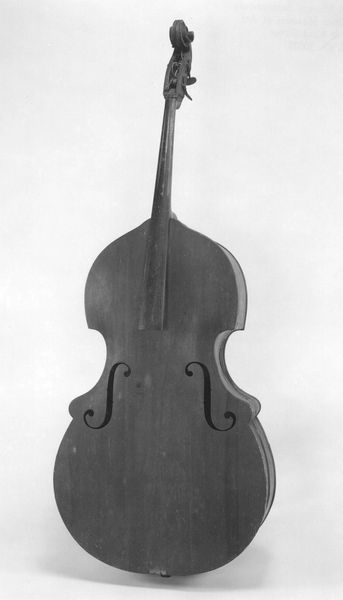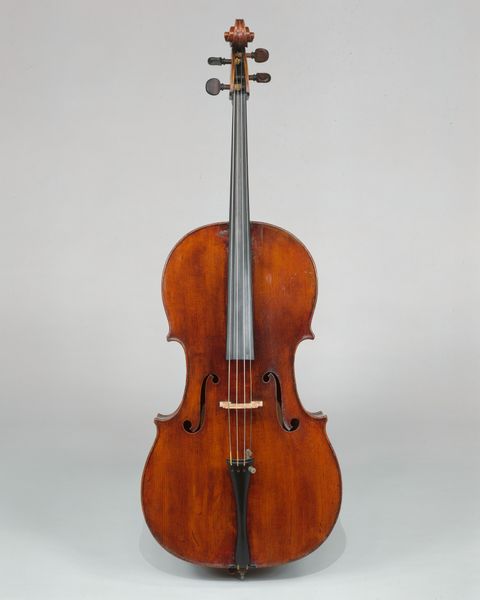
mixed-media, sculpture
#
mixed-media
#
sculpture
#
neo-dada
#
black-mountain-college
#
sculpture
#
musical-instrument
Copyright: © 2019 Robert Rauschenberg Foundation. All right reserved.
Curator: Okay, so looking at this intriguing piece, “Tibetan Garden Song ROCI TIBET,” a mixed-media sculpture conjured up by Robert Rauschenberg back in 1986… what's your take as an Iconographer? Editor: Initially, it feels a little melancholy. The subdued lighting, the slightly awkward presentation of the violin… It's as if a once-vibrant voice has been muted, deliberately confined. Curator: Confined is an interesting word choice! Because it’s definitely an unconventional presentation. Rauschenberg had such a knack for taking familiar objects and presenting them in entirely new contexts. This work, part of his ROCI series – Rauschenberg Overseas Culture Interchange – feels particularly potent. The intention of that project was to use art to spark cross-cultural dialogue during some pretty tense times. Editor: That intent adds another layer. The violin itself, with its long history as a symbol of both cultural harmony and personal expression, becomes emblematic. To place it in that vessel...what is that a pot or basin? is like asking us to consider its cultural storage and potential loss and rediscovery. It prompts us to consider how cultures are contained, perceived, and potentially misinterpreted across geographic and political divides. The container appears reflective—perhaps mirroring or distorting the image of the violin—adding complexity. Curator: Precisely! It is made to be reflective—a key element, because ROCI was really about initiating communication. That violin, trapped or cradled, speaks volumes about artistic exchange—of melodies echoing from the Tibetan mountains to Western ears and vice versa. Also, I think Rauschenberg would have just liked the inherent humor of sticking a violin in a pot. Editor: There's definitely a tension between the beautiful, organic form of the violin and the stark, manufactured object holding it. I'm fascinated by the visual contrast itself. The shiny pot renders a mirror-like appearance—I think that is interesting for reflection. Curator: Right! The way he manages to meld sculpture and cultural commentary. I suppose it encourages us to be optimistic and curious to listen to those musical traditions from other locations. Editor: In retrospect, looking closer, the fact that something so resonant can emerge from restriction—that’s what truly stays with me, I think. The hope, however guarded, echoes onward.
Comments
No comments
Be the first to comment and join the conversation on the ultimate creative platform.
